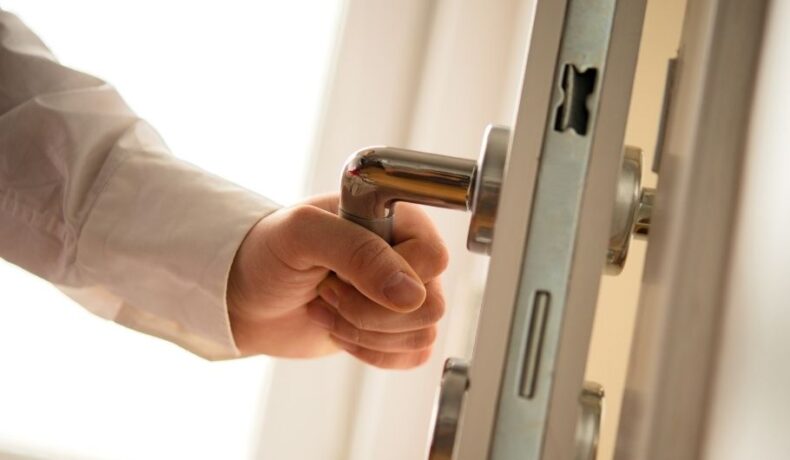If you’re looking into passive house design it’s inevitable that you’ll have come across energy-efficient doors.
These doors, along with passive house windows are an element that you can ill-afford to skip out on if you’re wanting to have your very own green home.
Thermal maintenance and energy-saving properties are just two of the advantages that come with these household components.
But what makes an energy-efficient door? How much do they cost and what are some of the best ones out there on the market?
We answer these questions and more in the article to come.
Table of Contents
What Makes An Energy Efficient Door?
Energy-efficient doors – much like passive house windows – have a set of performance criteria that need to be adhered to in order for them to be considered “energy-efficient”
These criteria are determined and certified by ENERGY STAR® – a program run by the U.S. Environmental Protection Agency (EPA) and the U.S. Department of Energy (DOE) that promotes energy efficiency. Additionally, the National Fenestration Rating Council (NFRC) assists by establishing objective energy performance ratings for windows, doors, and skylights.
Energy Efficient Door Criteria
A door must meet the following requirements if it’s to receive an Energy Star rating:
- Glazing – If the doot has a glass component, it must be double or triple-paned.
- Core Materials – The doors core must contain specific, energy efficient materials, such as wood cladding, polyurethane foam, or fiberglass
- Weatherstripping – This helps to reduce air leakage.
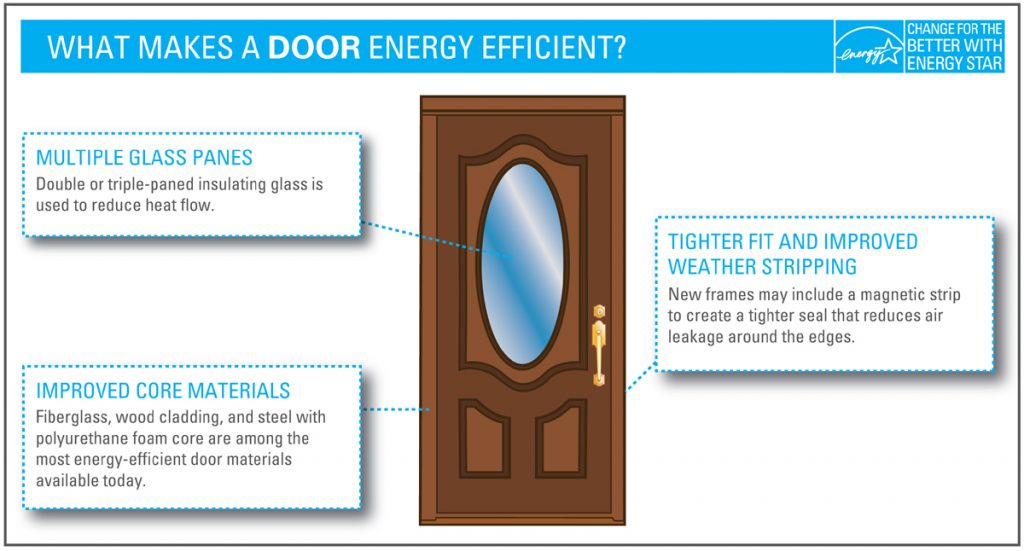
Image source: Energy Star
Glazing
If you’re wanting an energy-efficient door then single pane glass is not an option. Instead, you should make use of double or triple-glazing. The spaces in between these glazing layers are filled with gas – usually argon or krypton – that enhances their insulation properties.
These gases are denser than air and as such, they help improve thermal insulation efficiency.
These gases help bring the temperature of the window closer to room temperature. In addition to this, they help eliminate air currents that occur when differing temperatures meet.
Energy Efficient Glass
You’re going to need Low-E glass if you’re wanting your door to be energy efficient.
This glass, also known as low-emissivity glass, is an industry-standard component of energy-efficient doors.
The microscopically thin and transparent coating helps keep the temperature in your home regulated by reflecting internal temperatures back inside.
Weatherstripping
Weatherstripping is the process of sealing your doors and windows.
This sealing runs along the top, bottom, and sides of your door frame to ensure it’s properly sealed against the elements.
Vinyl, reinforced foam, metal channels – there are plenty of options for you to choose from.
Ultimately though, your installation method, the material you use, and even the kind of flooring your door opens over will determine the level of efficiency weatherstripping provides.
Energy Efficiency Values To Look Out For
U-Factor
U-factor measures the rate at which heat flows through your door. The lower the U-factor, the more energy-efficient your door will be.
U-factor values generally range from 0.25 to 1.25 and are measured in Btu/h·ft²·°F
To earn the Energy Star rating, a door with little to no glass must have a U-factor less than or equal to 0.17. A door that has a lot of glass, like a sliding patio door, needs to have a U-factor of less than or equal to 0.30 to earn the Energy Star label.
Solar Heat Gain Coefficient (SHGC)
The SHGC rating measure how well a door or window blocks the heat from sunlight. In other words, how much radiant heat comes in through a door, window, or skylight.
What is radiant heat? It’s the heat from the sun that you or other objects absorb. It can also warm up your rooms.
SHGC is expressed as a number between zero and 1. Values typically range from 0.25 to 0.80.
Normally, when you’re looking for the best SHGC, the lower the number, the better. This is because warmer climates demand a lower SHGC as it makes your windows or doors better at blocking heat gain, thus keeping your house cooler. However, if you live in a colder climate, you’ll want a higher SHGC rating.
Conversely, if you live in a colder climate, you’ll want a higher SHGC rating. This will make your product more adept at collecting solar heat and providing it to your home.
Air Leakage (AL)
This rating measure how quickly air escapes through any joints or cracks in your door. If your door has a lower AL number, it’ll mean less air leakage.
The standard value is 0.3 cfm/ft².
This rating is crucial because openings in doors can allow for moisture to enter your home and create mold. No one likes mold or the health issues that come with it.
Moreover, airtight doors can save you money on your heating and cooling bills by preserving your home’s internal temperature.
Visible Transmittence
Visible transmittance measures the amount of light that comes through doors. The more glazing that you add to your door, the lower your VT will be.
VT is measured on a scale of 0 to 1, and you will typically see values from 0.20 to 0.80.
If the VT drops below 0.40, everything you see through the window may appear gray.
Energy Efficient Door Values
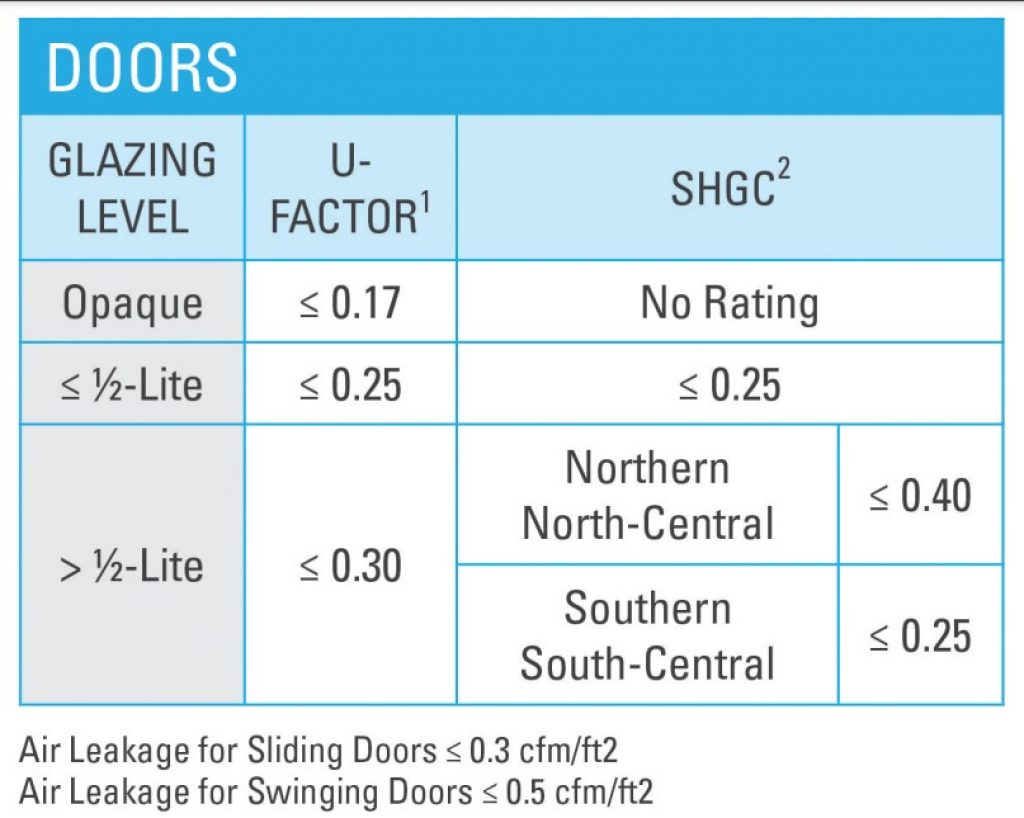
Image source: Energy Star
How Much Does An Energy Efficient Door Cost?
There are 2 main factors that help determine the cost of energy-efficient doors.
These are:
- The cost of the materials.
- Installation costs.
The following table provides average prices ranges for basic, mid-range, premium doors and takes into account the above factors.
| Basic Door Costs | Mid-Range Door Costs | Premium Door Costs | |
|---|---|---|---|
| Material costs | $234.00 – $366.00 | $492.00 – $600.00 | $750.00 – $1050.00 |
| Installation costs | $498.00 – $729.60 | $876.00 – $900.00 | $960.00 – $1020.00 |
| Total Cost | $732.00 – $1095.60 | $1368.00 – $1500.00 | $1500.00 $1710.00 – $2070.00 |
| Total Average Cost per United Inch. | $7.61 | $11.95 | $15.75 |
Additional Info: A united inch (U.I.) is a term that is used to determine the linear feet of framing. It is calculated by combining width and height in inches and using it as a single measure of length.
French Doors Vs Sliding Doors Which Are More Energy Efficient?
Before we answer this question for you, let’s have a brief look at each type of window.
French Doors
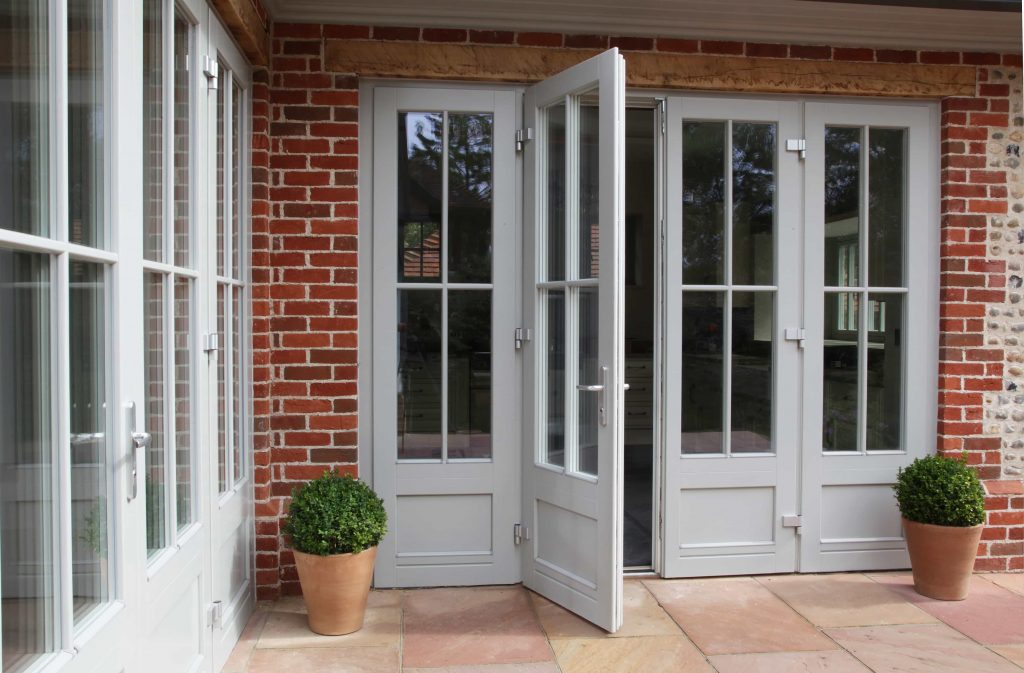
Image source: Green Building Store
If you have a traditional French door, you’ll notice that they close in the center. This leaves a gap that lends itself to air infiltration. This can make them far less efficient than a well-sealed, sliding door.
However, modern high-quality French doors make use of weather-stripping. This helps to create an airtight seal that’s more efficient than older, metal sliding doors.
Sliding Doors
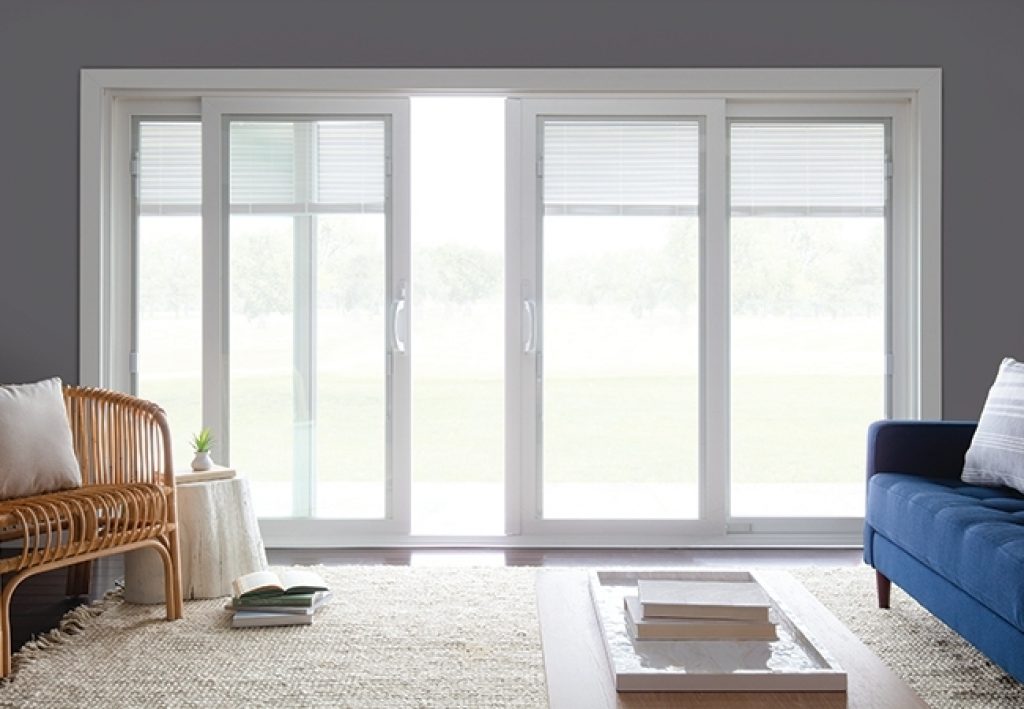
Image source: Pella
A single-pane sliding door with low-quality build materials is a big no-no for energy efficiency. Especially if you compare it to a French door that has a better glass to frame ratio.
In saying that, Energy Star-rated sliding doors with Low-E glass, triple-glazing, and weatherstripping will outperform your average French door.
The Outcome
So what have we learned from the above?
Well, both doors in their base form have their drawbacks, and either door can perform better than the other if they’re built in an energy-efficient manner.
So which one is better?
Honestly, it depends entirely on you. You see, both modern French doors and sliding doors are capable of providing a high level of energy efficiency if constructed appropriately.
What really matters is the following:
- Which type of door will suit the architectural feel of your home?
- Which one is going to be more ergonomic (provide ease of use and efficiency) relative to the environment it’s in? For instance, thick carpet close to your entrances will require sliding doors doors as opposed to French doors.
Once you have the answers to those questions, you’ll have your answer.
Is Closing A Door More Energy Efficient?
Yes and no. Confused? Let’s explain.
Exterior Doors
This one is a no-brainer. Keeping your exterior doors closed helps you to keep the wind and colder/warmer temperatures from coming into your house. In doing so, they help to maintain the internal temperature of your household.
As such, your heating or cooling system doesn’t need to work as hard.
Interior Doors
You’d think that closing the doors inside your house would perform the same function, right? Wrong.
Contrary to popular belief, if your home has an HVAC system, closing your interior doors would not be more energy-efficient. In fact, it may actually lead to an increase in your utility bills.
“Madness! How does that even make sense?”
The reason is twofold:
- Closing doors obstructs airflow in your home, and your HVAC unit needs proper airflow to function properly.
- AIr pressure builds in an enclosed room and that pressure has escape somehow. The air that escapes is replaced by incoming air – through the cimney, furnace flue etc. This cycle creates a continuous draft in the interior of your home, reducing efficiency.
But there’s more. If air doesn’t consistently cycle through your HVAC system, it isn’t getting filtered properly. This can lead to a build-up of dirt, dust, humidity, and even carbon monoxide – none of which you want.
Final Thoughts
Whether you’re wanting to turn your current home into a passive house or build one from scratch, energy-efficient doors are an absolute must – especially if you have the means.
These doors, combined with quality passive house windows, solar tube skylights, and a number of other helpful eco-friendly ideas will put you well on your way to having a cleaner, greener and happier home.

